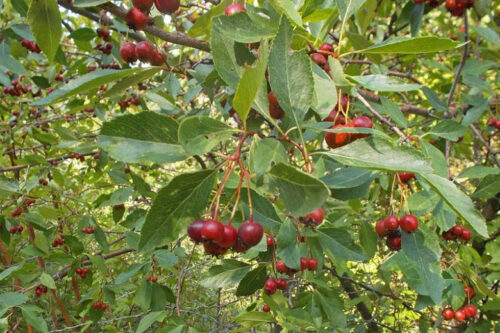Black hawthorn tree: Nature’s Delight
Black hawthorn tree, with their enchanting beauty and numerous benefits, have become a beloved addition to landscapes worldwide. In this article, we’ll explore the wonders of hawthorn trees, their remarkable characteristics, and the various ways they can enhance our lives.
Introduction to Hawthorn Trees
Hawthorn trees, scientifically known as Crataegus, are deciduous plants belonging to the Rosaceae family. They are native to Europe, North America, and parts of Asia, captivating onlookers with their ornamental splendor and stunning blooms. These trees have a rich history in folklore and traditional medicine, making them not only a visual delight but also a cultural treasure.
The Allure of Hawthorn Trees
1. Captivating Blossoms
One of the most mesmerizing features of hawthorn trees is their blossoms. Clusters of delicate, aromatic flowers adorn the branches in various hues of white, pink, and red, creating a picturesque scene during the blooming season. These blooms not only enhance the tree’s aesthetic appeal but also serve as a valuable source of nectar for bees and other pollinators, promoting ecological balance.
2. Heart-Healthy Benefits
Hawthorn trees have long been associated with heart health benefits. The berries, leaves, and flowers of these trees contain compounds that may support cardiovascular well-being. Traditionally, hawthorn extracts have been used to promote healthy blood circulation and manage certain heart conditions. Modern research is continually uncovering the potential of hawthorn as a natural remedy for heart-related concerns.
3. Wildlife Habitat
As native trees, hawthorns play a vital role in supporting local ecosystems. They provide shelter and sustenance to a diverse range of wildlife. Birds build nests among the branches, and small mammals find refuge in the thick foliage. Furthermore, the hawthorn’s berries are a valuable food source for various animals, contributing to the ecological balance of the region.
Landscaping with Hawthorn Trees
1. Ornamental Appeal
Hawthorn trees are a perfect addition to any landscape, lending an exquisite charm to gardens, parks, and streets. Their enchanting blossoms and vibrant foliage make them stand out during every season. Whether planted as a single specimen or in small groups, these trees add an aura of elegance to any outdoor space.
2. Hedge and Privacy Screens
Due to their dense growth habit, some hawthorn species serve admirably as hedges or privacy screens. When planted strategically, they can create natural barriers, providing seclusion and shielding areas from wind and noise. Moreover, the thorns on certain hawthorn varieties act as an additional deterrent to intruders, enhancing security.
3. Ecological Restoration
Hawthorn trees play a crucial role in ecological restoration efforts. Planting these trees in degraded or disturbed areas helps revitalize the ecosystem by attracting various pollinators and providing habitat for wildlife. Additionally, hawthorns aid in preventing soil erosion, making them valuable allies in environmental conservation.
Caring for Hawthorn Trees
1. Location and Soil
When planting hawthorn trees, it is essential to choose an appropriate location. These trees thrive in full sun to partial shade and prefer well-draining soil. They are adaptable to various soil types but perform best in loamy soil that retains some moisture without becoming waterlogged.
2. Watering and Pruning
While hawthorn trees are generally low-maintenance, they benefit from regular watering, especially during dry spells. Adequate hydration promotes healthy growth and ensures the tree’s vitality. Additionally, periodic pruning helps maintain a balanced structure and enhances flowering. It’s best to prune hawthorns during late winter or early spring before new growth begins.
3. Pest and Disease Management
Although hawthorn trees are relatively resilient, they may encounter some pests and diseases. Common issues include aphids, scale insects, and rust diseases. Regular inspection of the trees can help identify problems early on, allowing for timely treatment and preservation of the tree’s health.
Conclusion
Hawthorn trees are a natural delight that brings beauty, ecological value, and potential health benefits to our lives.
Whether adorning our landscapes or contributing to environmental conservation, these trees deserve a place of honor in our hearts and gardens.
So, consider adding the enchanting hawthorn to your outdoor space and experience the joy it can bring to you and the environment.



